Natural Science 100
Tony DiMauro
updated:
November 30, 2004
tonydude@yahoo.com
Wednesday, May 5 ( 9-1 am) and Wednesday, May 12 (1-4 pm)
Comprehensive Final-100 points
First, print a copy of the survey. Then, hit the Back button.
Second, answer the questions offline.
Third, go back to the survey and fill in your answers.
Take your time. Don't cut and paste your answers. Answer for yourself.
Your survey is here (use your last name) ----> A-G H-P Q-Z
Homework I
Critical Thinking I II III
1) How do Critical Thinking Skills and Science relate? Use Tony's Hypothesis or the Hollow Earth Theory as examples.
2) How does the COSMIC VOYAGE video relate to the structure of this course? Be specific.
3) What is the Doppler Effect, for sound and light? Explain how the Doppler Effect gives evidence of the Big Bang.
4) What is the scientific evidence of the Big Bang? How was this evidence found?
5) From Bryson's Introduction, discuss three things that you know and three things that you did not know.
6) Using any two of the Six Evil Genius tricks, answer the following question; How does COSMIC VOYAGE, this webpage and Bryson stimulate your imagination about the universe and you?
7) Describe the orders of magnitude demonstrated in the COSMIC VOYAGE.
8) What is Spectroscopy?
9) What two devices in the COSMIC VOYAGE helped humans to see their world? How have these devices changed through time?
10) Describe the discovery of the Cosmic Background Radiation as written by Bryson. Who do you think deserved the Nobel Prize?
11) Why is the Big Bang Theory of the Universe the prevailing theory among scientists, today?
12) Draw a diagram of the Big Bang Theory. (creativity gets 5 extra points)
13) What is the electromagnetic spectrum? How does this help scientists view the world?
14) Bryson quotes Andrei Linde as saying, "These are very close to religious questions". Why does Linde say this?
15) What are Galaxies? How many stars are in them? When were they formed? What's at their centers?
16) How did Stars form? What makes them shine? Why don't they collapse?
17) What is the Goldilocks effect? Is the Universe anthropomorphic?
18) Describe the large scale structure of the Universe within 1 billion light years from the Sun.
19) Why are astronomers so interested in SuperNovas in 'Mysteries of the Universe'?
Homework II
Critical Thinking I II III
1) What is the Standard Model? How was it developed? Take the tour through Particle Adventure.
2) Hewitt suggests that neutrons serve as 'nuclear cement'. Describe nuclear stability and radioactivity.
3) Using Bryson's chapter nine, describe in detail the discovery of atoms and it's constituents.
4) What did Ernest Rutherford add to the ladder of science? Why did Rutherford suggest,
"All science is either physics or stamp collecting?" What was the irony that Bryson mentions?
5) On page 140, Bryson explains atoms in the second paragraph. It's short and excellently written.
Is this passage something you can commit to memory? Think. Explain.
6) React (let yourself go. . .) to the first four paragraphs in section 14.2 of Hewitt.
7) Explain the diagrams on page 371. What is a Probability Cloud? How does s, p, d and f relate to the periodic table?
8) Describe the four fundamental forces of nature. Use Hewitt and the web material. Draw cool diagrams.
9) What is a Hypothesis? Give an Example. What is a Theory? Give an example. Are there more credible (acceptable) hypotheses than others? Are some theories more sound than others?
10) Aristotle-vs-Galileo, what was learned? How was it learned? What was gained by the human race?
11) How was Ptolemy's Geocentric Theory correct? Why is Copernicus' Heliocentric Theory more acceptable?
12) There are four questions posed about the Ptolemaic system on this page. Briefly answer these questions.
13) From what you have read in Bryson and Hewitt, what do you think about Isaac Newton?
14) Discuss Newton's four rules of reasoning in philosophy.
15) Explain the thought experiment that led Einstein to declare that the speed of light is constant.
16) Explain the Twin paradox. Why is it not a Paradox?
17) After reading 'Ghosts in the Cosmos' what did you begin to understand about General Relativity, Dark Matter, Dark Energy and Inflation?
18) What was the Copenhagen Intepretation of Quantum Theory?
19) What is Entanglement?
20) What is the evidence that led the scientists to introduce the Quantum Theory?
21) Casually read Top Ten article #5 on Critical Thinking on the Web. Sit back and relax. React to this article in 5 or 6 sentences. Next, provide an example in your life where CT was or would have been helpful. Summarize CT in a Diagram. Be creative.
(10 points extra credit!)
Format your work. Have a Front page, staple it correctly and use unlined paper.
Draw good diagrams, label them and use color. Explain your diagrams
Explain, define, describe and comment. React to the question---YOU should be in your answer.
Use quotes from Bryson, diagrams from Hewitt, and ideas from the website.
Homework III
Critical Thinking I II III
1) In Bryson's chapter 2, Welcome to the Solar System, he describes the solar system.
As you read the chapter, draw pictures, diagrams and tables to better visualize what Bryson is writing about.
2) In Bryson's chapter 2 explain gravity assist, gravitational pertubation and Drake's equation.
3) In chapter 14, Bryson suggests that we know very little about the inner workings of our planet.
Describe the examples that Bryson uses to demonstrate his proclamation.
4) Using Hewitt, compare the planets. Be creative. Use a table. Draw a picture. Write a poem.
5) What is the Asteroid Belt? How was it formed? Why must we worry about?
6) Using figures 27.2 and 27.5 explain Seismic waves.
How did these waves help determine the structure of the Earth?
7) What was the evidence presented in Hewitt for the Theory of Continental Drift?
8) Summarize and react to section 27.6 in Hewitt.
9) Magnetism was utilized to help determine seafloor spreading.
Describe magnetism, magnetic fields and magnetic domains? Use Hewitt's chapter 10.1/2/3.
10) In chapter 12, Bryson mentions one major problem with Earth theories that no one had resolved. (page 177)
What was this problem? How was it later resolved?
11) Using Bryson's chapter 12, discuss the origin of Plate Tectonics. Who was right? Who was wrong?
Certainly, mention the people involved and the evidence for and against.
12) Why does the earth have a liquid outer core? How do we know this?
13) In Rothschild and Lister, describe the accretion of the Earth up to and including the most significant
impact during the Hadean Age. Why was this event so significant?
14) Why would our LCA be a hypethermophile? What was the biosphere like during the late Hadean and early Archaen?
15) What is the cold trap? Why does the Earth have oceans but Venus and Mars do not?
Format your work. Have a Front page, staple it correctly and use unlined paper.
Draw good diagrams, label them and use color. Explain your diagrams
Explain, define, describe and comment. React to the question---YOU should be in your answer.
Use quotes from Bryson, diagrams from Hewitt, and ideas from the website.
Homework IV
Critical Thinking I II III
1) In chapter 17 of Hewitt, do exercises: 22, 24, 33, 34, 35 and 36.
2) Describe our Atmosphere as Bryson sees it.
3) When and where did the oxygen in the atmosphere happen? Explain, using Rothschild and Lister.
4) What is paleoclimatology? How is it used to determine the past? Give an example that helped us understand the past.
5) After looking at the PaleoClimate slidesets, choose one slideset and describe how scientists are using
both science and technology to unravel ancient climate conditions.
6) Looking at Paleo Perspectives, what is Global Warming? How is the Greenhouse Effect related?
7) What is proxy data? Why is it important to paleoclimatologists?
8) If someone were to say that the Charles Keeling Curve is simply an anomaly and that it does
not represent long-term climate conditions, what would you say?
9) Who was Midgley?
10) Explain why Carbon-14 dating and Oxygen-18 dating are powerful techniques in
determining paleoclimatic temperatures.
11) After reading the article on the Ice Ages, what science was involved in discovering the Ice Ages?
List and briefly explain the scientific techniques used? Organize your answer.
12) In the article, The Climatic effects of Water Vapor, explain figure 3 (atmospheric absorption).
all questions posted before Monday, March 15, 2004.
Format
your work. Have a Front page, staple it correctly and
use unlined paper.
Draw good diagrams, label
them and use color. Explain your diagrams
Explain, define, describe and comment. React
to the question---YOU should
be in your answer.
Use quotes from Bryson, diagrams from Hewitt,
and ideas from the website.
Homework V
Critical Thinking I II III
1) List 4 physical science concepts that Bryson writes about in The Bounding Main. Comment on them. Be brief.
2) How does Bryson describe our planets' Hydrosphere? Draw a pie chart to illustrate his point.
3) Describe the discovery of the Asteroid impact that killed off the dinosaurs, according to Bryson.
What physical principles were applied by Alvarez and the science community?
4) After reading section 18.4, describe how water is purified? How is San Diego's water purified?
5) After reading section 30.2 describe radiometric dating. What is it? How do we use it?
6) According to The Discovery of Global Warming, what is the main ingredient of climate?
Describe 4 physical principles used to discover climate changes.
7) What did Namias mean by 'complexly coupled mechanism' leading to a 'self-perpetuating system'?
8) Explain figure 28.29 in Hewitt. The Quality of Water.
9) Dinosaur Destruction
Format your work. Have a Front page, staple it correctly and use unlined paper.
Draw good diagrams, explain them, label them and use color.
React, comment, or connect to the question---YOU should be in your answer.
Use quotes from Bryson, diagrams from Hewitt, and ideas from the website.
Homework VI
Critical Thinking I II III
1) How can we use evolution to our benefit as demonstrated in the Evolution video?
2) How is Natural Selection similar to Radioactivity?
3) Describe the electro-chemical and the electro-physical signal from the eye into the brain.
4) How can you demonstrate to someone that the human eye contains cones that sense red, green and blue light?
5) Explain how the frequency, sensitivity and distribution of cones and rod in the eye affect seeing. Be complete.
6) In the Brain movie, the narrator describes our brains as the basis of reality. What does he mean?
7) How is the eye similarand different to both a film camera or a digital camera?
8) Briefly summarize chapter 19 in Bryson? Why is complexity natural? What is the Murchison Meteorite and why does Bryson mention it?
Why does Bryson say that, "Everything that has ever lived, plant or animal,
dates its beginnings from the same primordial twitch." What is DNA?
9) Go to the Animations pages I, II, III, find a good animation and tell me about it.
10) Eye-Brain System
Due: Monday, May 3, 2004 (before 10 am)
Homework VII
Critical Thinking I II III
First, If your student RedID is even, download this .pdf or If your student RedID is odd, download this .pdf
Second, Answer the questions before going to the survey.
Third, Go to the survey below and input your prepared answers.
Survey (even student RedID)---Homework VII - Coming Back Home. (even)
Survey (odd student RedID)---Homework VII - Coming Back Home. (odd)
Article Analysis I
75 points
Article 1 Article 2 Article 3
A-H H-P Q-Z
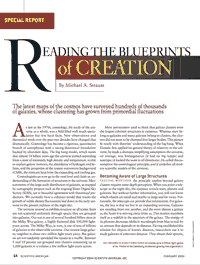

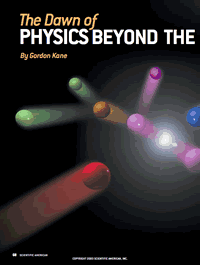
Article Analysis II
100 points
Article 1 Article 2 Article 3
A-H H-P Q-Z
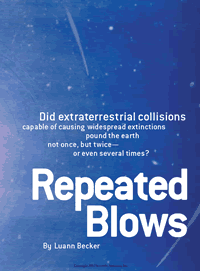
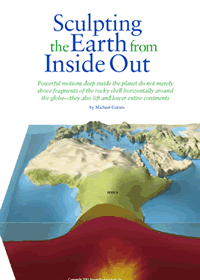

Article Analysis III
100 Points
Due:
Last day of class, Friday Dec. 10, 2004
If you decide to do this assignment, you must score
a 70 or above for it to count.
I don't want to grade any bad work. Thanks.
First, download one of
the three articles. You
choose.
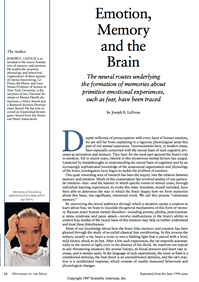
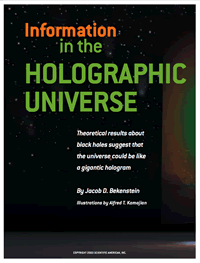
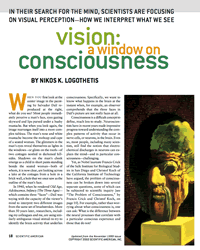
Second---Read your article and annotate it as I did. As you read it, you should interact with your article!
Talk back and respond with passion. Ask critical questions as you read.
Reread the section if you did not understand it. Look up words you do not understand.
Think about what you are reading and how it affects your life. (20 points)
Third---Physical Science Concepts. Connect the article to physical science concepts in Hewitt.
Draw diagrams of 5 basic physical science concepts and explain. (30 points)
Examples III, IV
Fourth---Critical Thinking Skills Analysis. Find two specific examples in the article that
demonstrate how the authors use the first five critical thinking abilities. Explain your examples. (30 points)
1. Identify the focus: the issue, question, or conclusion
2. Analyze arguments
3. Ask and answer questions of clarification and/or challenge
4. Define terms, judge definitions, and deal with equivocation
5. Identify unstated assumptions
Fifth---Demonstrate your comprehension (no summary) and disticntive take on what you learned.(5)
Make relevant references from the article to Bryson.(5)
Use your Critical Thinking Skills.(5)
React, comment, or connect to what you read and learned in the article.(5)
(at least, two pages) (20 points)
Think about what you are writing.
Do not write a sentence that does not say something.
It's possible to get more points if you try harder.